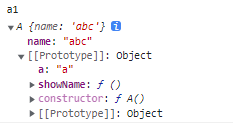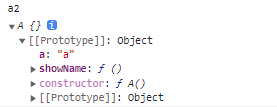Object.create()与new区别
小曼的码世界 人气:0Object.create与new区别
function A() {
this.name = 'abc';
}
A.prototype.a = 'a';
A.prototype.showName = function () {
return this.name;
}
var a1 = new A();
var a2 = Object.create(A.prototype);


从这个例子可以看出,a2只继承了A原型的属性和方法,
a1 是构造函数 A 的实例,继承了构造函数 A 的属性 name及其原型属性和方法。
所以Object.create()与new的区别在于Object.create只继承原型属性和方法,继承不了构造函数的属性和方法。而通过new操作符创建的实例,既可以继承原型的属性和方法,又可以继承构造函数的属性和方法。
Object.create()原理
Object.create = function (o) {
var F = function () {};
F.prototype = o;
return new F();
};
new原理
- 创建一个空对象obj;
- 将该空对象的原型设置为构造函数的原型,即obj.proto = func.prototype;
- 以该对象为上下文执行构造函数,即func.call(obj);
- 返回该对象,即return obj。
var newFunc = function ( func ){
var obj = Object.creat(func.prototype);
var ret = func.call(obj);
if(typeof ret === 'object') {
return ret;
}
else {
return obj;
}
}
从两者的具体实现可以看出:Object.create没有执行步骤三,所以继承不了构造函数的属性和方法。
继承
a1.__proto__ == a2.__proto__; // true a1.__proto__ == A.prototype; // true a2.__proto__ == A.prototype; // true a1.__proto__.__proto__ == Object.prototype; // true a1.__proto__.__proto__.__proto__ == null; // true
比较组合继承与寄生组合继承
组合继承
在子类构造函数中调用父类构造函数,并把父类实例化对象赋给子类原型。
function Parent(name, age) {
this.name = name;
this.age = age;
}
Parent.prototype.showName = function () {
return this.name;
}
function Child(name, age) {
Parent.call(this, name, age); // 这里调用一次父类构造函数
}
Child.prototype = new Parent(); // 这里也会调用父类构造函数
Child.prototype.constructor = Child;
这种方式在构造函数继承时执行了一遍父类构造函数,又在实现子类原型继承时调用了一遍父类的构造函数。因此父类构造函数调用了两遍,所以这不是最优化的继承方式。
寄生组合继承
function Parent(name, age) {
this.name = name;
this.age = age;
}
Parent.prototype.showName = function () {
return this.name;
}
function Child(name, age) {
Parent.call(this, name, age); // 这里调用一次父类构造函数
}
Child.prototype = Object.create(Parent.prototype); // 这里避免了调用父类构造函数
Child.prototype.constructor = Child;
加载全部内容